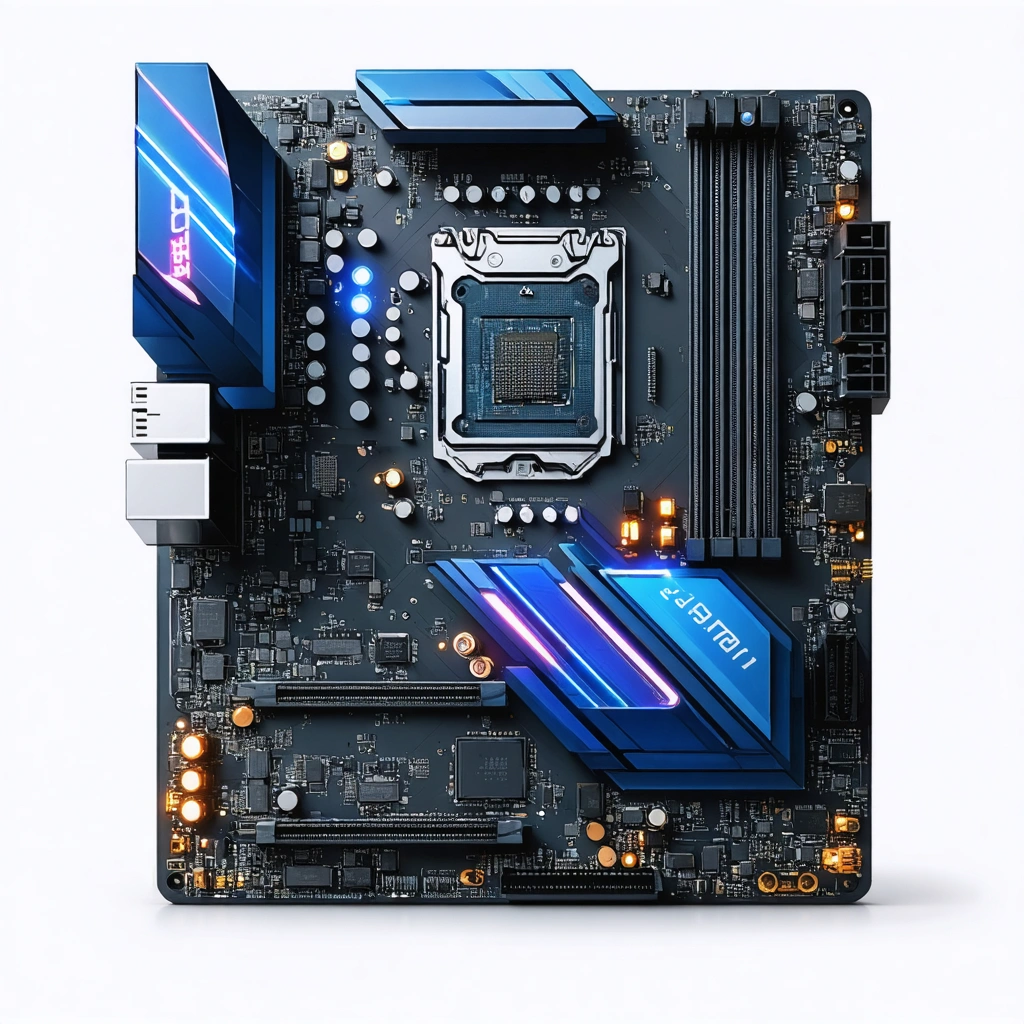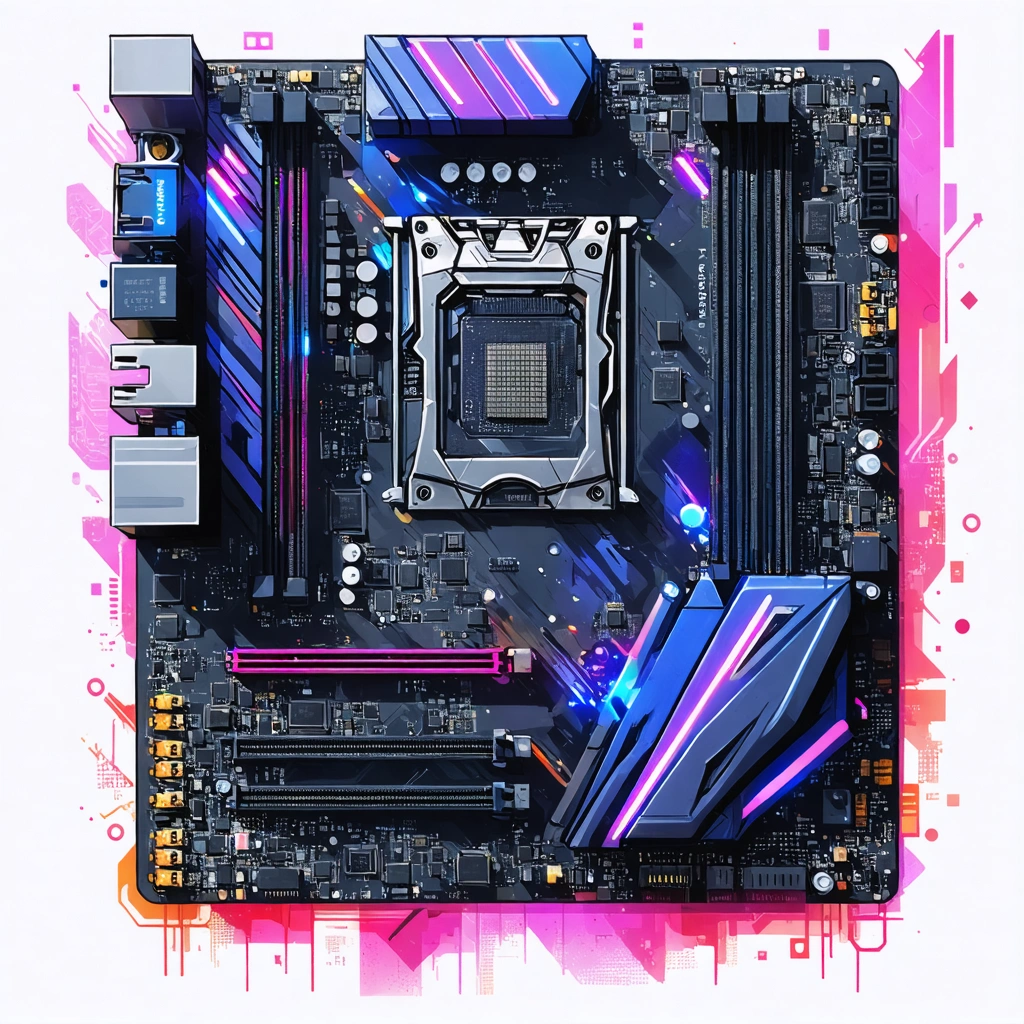
When Space Meets Performance — The Rise of Mini ITX Motherboards
Imagine trying to build a powerful PC but being constantly told you need a sprawling desk or a massive case just to house the components. For years, enthusiasts and professionals alike wrestled with the idea that bigger meant better when it came to motherboards. But what if you could have the best of both worlds — a motherboard so compact it fits in the tiniest cases, yet powerful enough to handle demanding tasks? Enter the mini ITX motherboard, a brilliant engineering feat that flips the old narrative on its head.
These tiny marvels, often called the smallest motherboard form factor for desktop PCs, are revolutionizing how we think about space and performance. Unlike their larger siblings, such as the mini ATX motherboard or standard ATX boards, mini ITX motherboards squeeze essential features into a footprint barely over 6.7 x 6.7 inches. That means your dream build doesn’t require a room-sized setup anymore — it can fit on your nightstand, behind your monitor, or even inside a sleek, portable case.
But with all this compactness, a natural question arises: does smaller mean sacrificing power? This is where the story gets even more exciting.
Why Sacrifice Nothing? The Power Packed Inside Mini ITX Motherboards
At first glance, one might think that a mini ITX motherboard offers limited capability due to its size. However, these boards are anything but limited. Enthusiasts and gamers are increasingly choosing mini ITX builds for their ability to support high-performance CPUs and GPUs without the bulk. Whether outfitting a gaming rig, a home theater PC, or a professional workstation, mini ITX motherboards deliver robust performance that rivals larger configurations.
Take, for example, the popular mini ITX motherboard AM4 options designed for AMD Ryzen processors. These boards balance compactness with compatibility, supporting powerful CPUs, multiple RAM slots, and even high-speed NVMe SSDs. This means you can enjoy lightning-fast processing speeds, multitasking prowess, and smooth gaming experiences — all from a board that could easily be mistaken for a tech gadget rather than a core computer component.
It’s worth noting, too, that the energy efficiency in mini ITX setups tends to be better owing to the streamlined design, which is a big plus for those concerned about power consumption or heat management in small spaces.
What Makes Mini ITX Motherboards Stand Out?
- Space-saving design: Perfect for compact builds and portability.
- Compatibility with high-end components: Support for latest CPUs, GPUs, and fast storage.
- Advanced connectivity: Includes USB 3.2, Wi-Fi, Bluetooth, and multiple PCIe slots in some models.
- Energy efficiency: Optimized power delivery with less waste heat.
These features make mini ITX motherboards a favorite among modders and builders who want to push the boundaries of small-form-factor PCs without compromising on what matters most — performance and reliability.
Choosing the Right ITX Motherboard for Your Build
When deciding on a motherboard, many get confused by terms like mini ITX motherboard versus mini ATX motherboard, or they wonder if the smallest motherboard can really handle their needs. The truth is, understanding your build requirements is key.
For instance, a mini ATX motherboard is actually larger than a mini ITX board and offers more expansion slots but at the cost of a bigger case. If your priority is maximum power and expansion, mini ATX might be the way to go. But if you’re craving a sleek, minimalist setup — say, a portable LAN party rig or a discreet office workstation — the mini ITX motherboard is often the champion.
Additionally, compatibility with your chosen CPU socket, such as the AM4 for AMD processors, is critical. The mini ITX motherboard AM4 range has grown significantly, giving users the freedom to select from budget-friendly to high-end Ryzen CPUs, ensuring that this small board can handle everything from casual browsing to intense video editing.
In this article, we’ll dive deeper into the nuances of mini ITX motherboards, comparing them to other form factors, exploring the best models on the market, and offering tips on building your own compact powerhouse.
Stay tuned as we uncover how the smallest motherboard in your build can become the biggest game-changer.

Exploring ITX Motherboards: Compact Powerhouses for Small-Form-Factor PC Builds
What is an ITX Motherboard and How Does It Differ from Other Motherboard Sizes?
An ITX motherboard refers to a specific form factor designed to offer a smaller footprint compared to traditional ATX or microATX boards. The most common variant is the mini ITX motherboard, which measures 170mm x 170mm (6.7 inches square). This compact design makes it ideal for building powerful yet space-efficient PCs, especially for users who prefer small-form-factor (SFF) builds without compromising on performance.
Compared to a mini atx motherboard or a full-sized ATX motherboard, mini ITX motherboards have fewer expansion slots and usually one PCIe slot, but they still pack plenty of features such as multiple RAM slots, M.2 storage support, and integrated Wi-Fi on many models. This balance of size and capability is why the mini ITX form factor is highly popular among gamers, HTPC enthusiasts, and professionals seeking portable or compact PCs.
Why Choose the Smallest Motherboard Like Mini ITX for Your Build?
Choosing the smallest motherboard like the mini ITX offers several compelling advantages:
- Space Efficiency: Ideal for compact cases, allowing PC placement in tight spaces such as small desks, living rooms, or on-the-go setups.
- Portability: Smaller size means easier transport for LAN parties, travel, or mobile workstations.
- Thermal Efficiency: Modern mini ITX cases and motherboards are designed to optimize airflow despite limited space.
- Powerful Performance: Despite size constraints, many mini ITX motherboards support high-end CPUs and GPUs, enabling desktop-level performance.
However, the trade-off includes limited expansion slots and sometimes fewer USB ports or PCIe lanes compared to larger boards, so understanding your hardware needs is essential when selecting a mini ITX motherboard.
What Are the Key Features of Mini ITX Motherboards?
Mini ITX motherboards, while compact, often come loaded with features that make them versatile and competitive:
- CPU Socket Compatibility: Many mini ITX motherboards come with popular sockets like Intel LGA 1200/1700 or AMD AM4, the latter being especially favored by AMD enthusiasts for Ryzen CPUs.
- Memory Support: Typically 2 DIMM slots, supporting up to 64GB or more of DDR4/DDR5 RAM.
- Storage Options: M.2 slots for NVMe SSDs, SATA connectors for traditional drives.
- Connectivity: Integrated Wi-Fi and Bluetooth on many models, multiple USB ports including USB-C, LAN ports, and audio jacks.
- Expansion: Usually a single PCIe x16 slot for a discrete GPU or expansion card.
For example, the mini ITX motherboard AM4 variants from brands like ASUS, Gigabyte, and MSI are popular for assembling compact Ryzen-based gaming rigs or workstations, combining robust CPU power with efficient form factor.
How Does the Mini ITX Motherboard AM4 Support AMD Ryzen CPUs?
The mini ITX motherboard AM4 specifically caters to AMD’s AM4 socket processors, including Ryzen 3rd, 4th, and 5th generation CPUs. These motherboards allow builders to harness the strong multi-core performance and efficiency of AMD’s Ryzen lineup in a compact form factor. Features often include:
- Support for overclocking on select chipsets (B550, X570)
- PCIe 4.0 support for next-generation NVMe SSDs and GPUs
- High-quality VRMs (Voltage Regulator Modules) to sustain stable power delivery in a small space
- Integrated cooling solutions optimized for tight case builds
These capabilities make mini ITX AM4 motherboards ideal for gamers and content creators who want a powerful yet compact PC without the bulk of a full-sized tower.
What Are Common Use Cases and Real-Life Examples of Mini ITX Motherboards?
Mini ITX motherboards have revolutionized PC building by enabling compact designs with high performance. Some common use cases include:
- Gaming PCs: Builders seeking powerful gaming rigs with discrete GPUs in small enclosures.
- Home Theater PCs (HTPCs): Compact media centers with quiet cooling and integrated Wi-Fi.
- Workstations: Portable yet powerful setups for video editing, 3D modeling, and software development.
- LAN Party Builds: Easy-to-transport PCs that don’t sacrifice performance.
For example, the NZXT H1 case combined with a mini ITX motherboard has become a popular choice for gamers wanting a sleek, small tower with full GPU support and efficient cooling. Similarly, many enthusiasts use mini ITX motherboards to build silent, compact HTPCs that fit seamlessly into living rooms.
What Should You Consider When Buying a Mini ITX Motherboard?
When selecting a mini ITX motherboard, consider the following factors:
- CPU Compatibility: Ensure the motherboard supports your desired processor socket (AM4 for AMD, LGA 1700 for Intel 12th Gen, etc.).
- Chipset Features: Chipsets like B550 and X570 for AMD provide better features and PCIe 4.0 support.
- Expansion Needs: Limitations on PCIe slots mean you must plan your GPU and expansion card choices carefully.
- Connectivity: Verify the number and types of USB ports, networking options (Wi-Fi, Ethernet), and audio connectors meet your needs.
- Cooling and Power Delivery: High-quality VRMs and adequate cooling are critical for stable performance, especially if overclocking.
- Memory Support: Check max RAM capacity and speed supported to future-proof your build.
Summary: Why Mini ITX Motherboards Are Game-Changers in PC Building
Mini ITX motherboards represent a perfect fusion of compact size and powerful performance, enabling builders to create small yet capable PCs. Whether you’re upgrading to a mini ITX motherboard AM4 to leverage AMD Ryzen’s performance or prefer Intel’s offerings, the mini ITX form factor offers flexibility and efficiency for diverse computing needs.
With the smallest motherboard options now supporting high-speed storage, robust connectivity, and powerful CPUs, mini ITX motherboards continue to gain popularity across gaming, professional, and casual computing segments. Understanding their features, trade-offs, and applications will help you make an informed choice for your next small-form-factor PC build.


